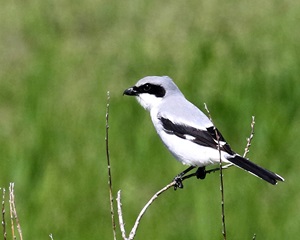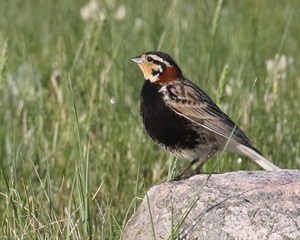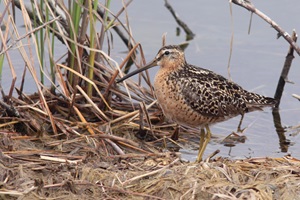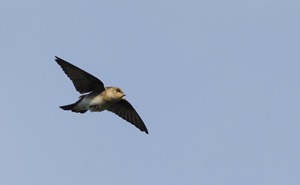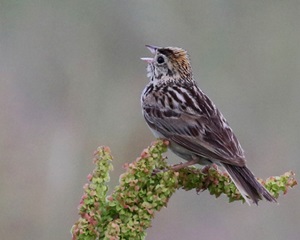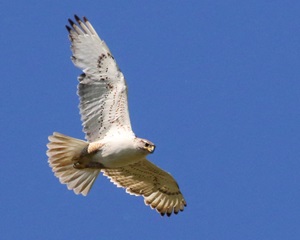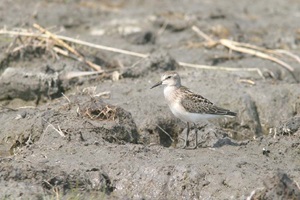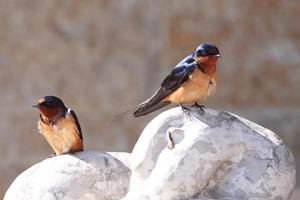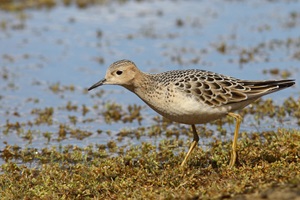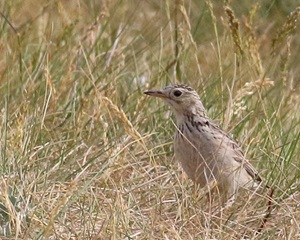Finding stewards for sandpipers, heroes for hawks, champions for chimney swifts
Manitoba Important Bird Areas (IBA) Program aims to tie people to the wildlife that needs them
The Ferruginous Hawk. The Piping Plover. The Chimney Swift. The Chestnut-collared Longspur. The Semipalmated Sandpiper.
They’re all threatened bird species. And they’re all dependent on the goodwill of people.
“All these birds—grassland birds, shorebirds, and those in urban areas—need very specific habitats. Grassland birds rely on people retaining grasslands, for example,” says Tim Poole, the Manitoba Important Bird Areas (IBA) Program coordinator with Nature Manitoba.
“But in my view, there is also the bigger picture to consider. Grasslands do all these fantastic things for us; they’re important not just for birds and wildlife, they do other things like storing carbon. And we’re hearing increasingly how important wetlands are to the wider society,” he adds.
“So, yes, these birds rely on people for these habitats, but the habitats also give back to people. There are real synergies there—between these birds and the communities that they depend on.”
Since 2016, the Manitoba IBA Program has actively engaged communities to instill long-term pride and awareness in wildlife and the natural environment through species-at-risk stewardship, more bird monitoring activity, and educational programming.
This spring, Poole and his colleagues will be doing further outreach in order to train the public to identify and monitor three threatened groups of birds—shorebirds, grassland birds, and aerial insectivores—in southwestern Manitoba, which contains some of the most important bird habitat in the province.
Image gallery: Manitoba IBA Program
Among other activities, they’ll be:
- Recruiting community champion volunteers in southwest Manitoba, through training workshops and public events;
- Working with partners (including Bird Studies Canada, the Manitoba Beef Producers and the Manitoba Habitat Heritage Corporation) to provide incentive packages to owners of native mixed-grass prairie in the region;
- Expanding the number of participants and area covered during its 2019 international shorebird survey in the province;
- Recruiting stewards and monitors in three Indigenous communities, including Dakota communities in southwestern Manitoba; and
- Recruiting regional volunteers for the Manitoba Chimney Swift Initiative.
“The long-term trends for aerial insectivores, including chimney swifts, in Canada are particularly horrendous,” says Poole. “So it’s really all about trying to tie these communities, these individuals, to these different groups of birds.”
Sustainability is core to how we do business at Enbridge, as we help to meet North America’s growing energy needs in ways that are economically, environmentally and socially responsible.
We take responsibility to the environment seriously, and we invest in programs that promote environmental stewardship, conservation, habitat remediation and environmental education.
Our recent $5,000 donation to the Manitoba IBA Program will help Nature Manitoba continue to make those vital connections between people and the birds who need them.
“We’re taking a holistic view—identifying community champions, while at the same time getting people to start thinking about these threatened groups of birds and what they can do for them,” says Poole.
(TOP PHOTO: The Buff-breasted Sandpiper, a shorebird species of special concern. The Manitoba IBA Program plans to organize training events in spring 2019 with volunteers and community members to assist them with identification and monitoring of this group of birds. Photo credit: Christian Artuso, Bird Studies Canada.)




